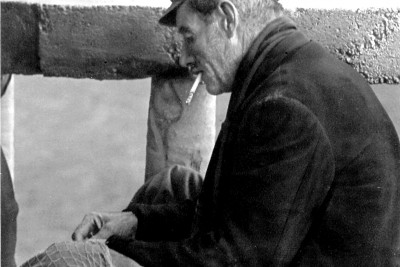History of Praiano
For a healthy life, morning hours must be spent in Vettica and evenings in Praiano

Praiano offers tourists a wonderful setting and tranquil location from which to sample the joys of the Amalfi Coast. It is perfect for those who want to sojourn in peace among more authentic local inhabitants and to pick their own time to immerse themselves in the more touristy neighboring towns of Positano, Amalfi, and Ravello.
Praiano is situated along the Amalfi coast, between Positano and Amalfi, above and below the winding road that runs directly through it. Houses are built in clusters or scattered individually over the green rugged mountain cliffs that plummet into the deep blue Mediterranean.
Hundreds of steps lead to the very top of the mountain and to the sea. In Praiano there are only two little beaches: la Praia and la Gavitella. The area was first inhabited during Roman times. Historian Cassese Leopold wrote: "Since the first century, because of the charm of its climate and the enchantment of its views, people belonging to the entourage of the emperor had sumptuous villas on the Amalfi Coast. That seems to indicate that the Coast was part of the imperial domains".
Praiano’s original name was Pelagianum, which means “open sea”, then changed to Plagianum and then eventually to Praiano. The first written evidence of the existence of the town dates back to the IX century.
In the Middle Ages Praiano was one of the hamlets of the Republic of Amalfi. Since then, it was made up of two separate areas: the hamlet of Praiano at the top and that of Vettica Maggiore below, a division due to what Mother Nature offered: the lower part was populated by fishermen, the upper part by farmers, who grew citrus fruits, potatoes, tomatoes, grapes and barley. The council crest of Praiano includes oranges, to signify the importance of agriculture.

In the Angevin period, Praiano was elevated to the status of "Universitas ", a title given to territories with a degree of autonomy, even though it remained part of Amalfi until the seventeenth century.
Documents from the fifteenth century mention trading activities at the beach of the Praia, where a dry dock was used to repair caravels, the ships used by the Spanish and Portugese for the ocean crossings.
The “Cala della Gavitella”, the beach located in Vettica, was used for trading and storage of goods.
In the 18th century, the town was renowned for its linen industry, and in particular for the production of the special twisted fiber. In the course of the centuries, 15 churches and chapels were built on both sides of the town, most of them for private use. The two main churches are the Church of Saint Luca on the Praiano side and Saint Gennaro in Vettica.An old local adage says "Chi vuol vivere sano, la mane a Vettica, la sera a Praiano". The prescription is clear: for a healthy life, morning hours must be spent in Vettica and evenings in Praiano. This is the secret of local vitality and love of life. Praiano is a favorite destination for visitors who want to be immersed in one of the most exquisite natural habitats in the world.

